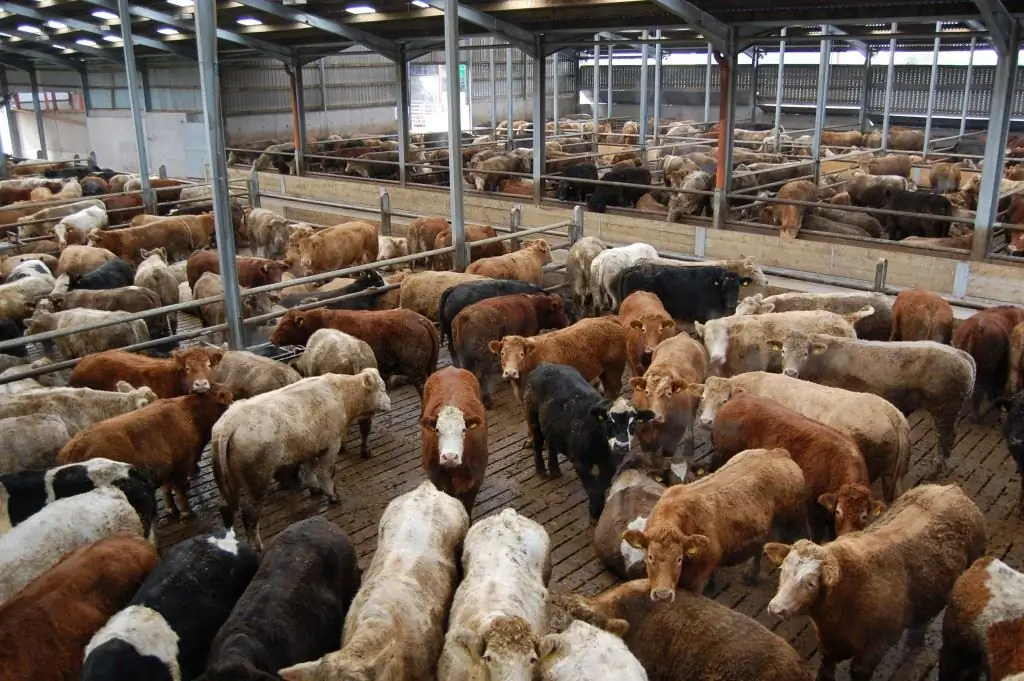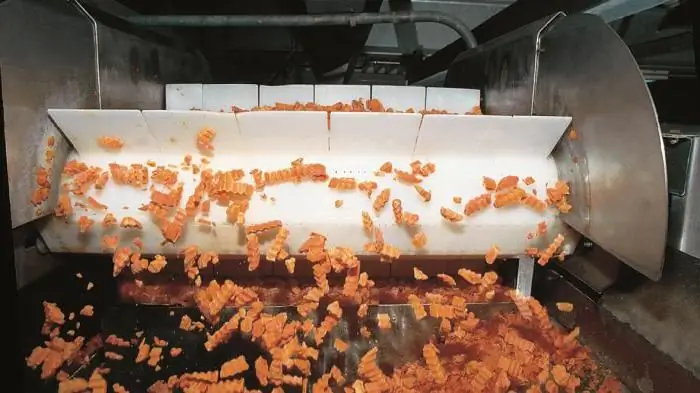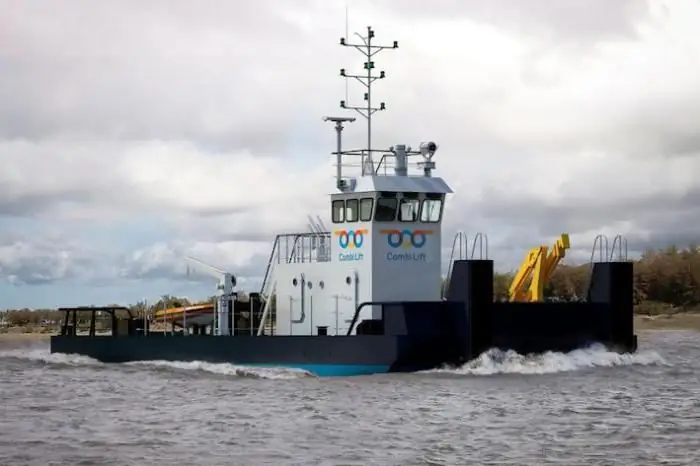2026 Author: Howard Calhoun | [email protected]. Last modified: 2025-01-24 13:10:31
Prospective development of the largest industries is impossible without the most valuable raw materials and high quality energy carrier - natural gas. Its use not only automates many technological processes, but also significantly improves the living conditions of the population.

What is natural gas?
There is no single chemical formula for natural gas - in each field it has a composition with a different ratio of its components.
Natural gas is a mixture of hydrocarbons, most of which is methane. The remaining components are: butane, propane, ethane, hydrogen, hydrogen sulfide, helium, nitrogen, carbon dioxide.
Natural gas is colorless and odorless, its presence in the air cannot be determined without the help of special instruments. The smell familiar to every person is given to the gas by artificial means (odorization). Through this process, it is possible to sense the presence of the gas in the air and prevent life-threatening situations.
Origin
There is no single theory regarding the origin of gas, scientists adhere to two versions:
- Once upon a time there was an ocean instead of the continents. Dying, living organisms accumulated in a space in which there was no air and bacteria that triggered the decomposition process. Thanks to geological movements, the accumulated masses sank deeper and deeper into the bowels of the Earth, where, under the influence of high pressure and temperature, they entered into chemical reactions with hydrogen, forming hydrocarbons.
- Earth dynamics contributes to the rise of hydrocarbons located at great depths, where there is a lower level of pressure. As a result, gas or oil deposits are formed.
Production
Contrary to popular belief, natural gas can be underground not only in voids, the extraction of which does not require significant material and energy costs. Often it is concentrated inside rocks with such a fine porous structure that it cannot be seen by the human eye. The depth of deposits can be small, but sometimes reaches several kilometers.

The gas production process includes several stages:
- Geological work, as a result of which the exact location of deposits is determined.
- Drilling production wells. It is carried out throughout the field, which is important for a uniform decrease in gas pressure in the reservoir. The maximum well depth is 12 km.
- Production. The process is carried out at different levelspressure in the gas-bearing reservoir and the earth's surface. Through the wells, the gas tends to go out to where the pressure is lower, immediately entering the collection system. In addition, associated gas is produced, which is a by-product of oil production. It is also of value to many industries.
- Preparing for transportation. The produced gas contains numerous impurities. If their quantity is insignificant, the gas is transported by tankers or pipeline to the plant for further processing. Natural gas is purified from a significant amount of impurities at integrated treatment facilities that are being built near the field.

Why we need natural gas processing
The formation of natural gas occurs during the formation of layers of porous rocks containing oil and coal seams. In addition to components important for the needs of the industry, it contains impurities that make it difficult to transport and use by end users.
Immediately after production, the gas is dehydrated at the complex treatment plants, during which water vapor and sulfur are extracted from it. Further processing of natural and associated gas is carried out at chemical and gas processing plants.
Basic principle of processing plants
The main task of an enterprise engaged in the processing of natural gas is the maximum possible extraction of all components of the fossil and bringing them to a marketable condition. It must not harm the environment.environment and the earth's interior, and financial costs must be minimized.

Due to the implementation of all aspects of this rule, natural gas processed products are considered high quality and economical.
Recycling Methods
There are the following gas processing methods:
- physical and energetic;
- chemical catalytic;
- thermochemical.
Physical-energy methods are used to compress gas and separate it into components using cooling or heating units. This natural gas processing technology is most often used directly in the fields.
Initially, the process of compression and separation was carried out using compressors. To date, less financially expensive equipment - ejectors and oil pumps - has been successfully used.
Chemical-catalytic method of processing natural gas involves the conversion of methane into synthesis gas for its subsequent processing. This can be done in three ways: steam or carbon dioxide reforming, partial oxidation.
The method of partial oxidation of methane is often used. This is due to the convenience of carrying out the process in an autothermal mode (when the raw material is heated due to heat release during incomplete oxidation of hydrocarbons), the reaction rate and the absence of the need to use a catalyst (as in steam and carbon dioxide reforming).
The resulting synthesis gas is not further processeddivision into components.

Thermochemical methods imply thermal action on natural gas, resulting in the formation of unsaturated hydrocarbons (eg, ethylene, propylene). The implementation of the process is possible only at very high temperatures (about 11 thousand degrees Celsius) and a pressure of several atmospheres.
Products processed
Many people associate the word "gas" with fuel and a gas stove. In fact, the application of its components is more extensive:
- helium is a valuable raw material used in high technology, such as in the manufacture of medical equipment and magnetic pillows for long trips in public transport, in the construction of nuclear reactors and space satellites;
- Formaldehyde, one of the derivatives of methane, is a raw material that plays an important role in the production of phenolic plastics (brake linings, billiard balls) and resins, which are an important component of building structural materials (plywood, fiberboard), paint and varnish and thermal insulation products;
- ammonia - used in pharmaceutical (water solution), agricultural (fertilizer) and food (flavor enhancer) industries;
- ethane is the raw material from which polyethylene is produced;
- acetic acid - widely used in the textile industry;
- methanol is a fuel for vehicles.

Extraction and processing of natural gas - processes,thanks to which the most important branches of industry are effectively developing. The gas is delivered to the end consumer after careful processing, its use significantly improves living conditions.
Recommended:
Associated petroleum gas: composition. Natural and associated petroleum gas

Oil and gas are the world's most important raw materials. Associated petroleum gas occupies a special place in the oil and gas industry. This resource has never been used before. But now the attitude towards this valuable natural resource has changed
Slaughter of cattle at meat processing plants: rules, technology, methods and methods

Providing the consumer basket with meat products directly depends on the slaughter and processing of cattle. Delicious beef and veal dishes are largely the merit of livestock breeders who know how to properly slaughter bulls and cows. There are various technologies, methods and methods for slaughtering cattle, which make it possible to obtain high quality meat products
Meat: processing. Equipment for meat and poultry processing. Production, storage and processing of meat

Information of state statistics show that the volume of meat, milk and poultry consumed by the population has significantly decreased in recent years. This is caused not only by the pricing policy of manufacturers, but also by the banal shortage of these products, the required volumes of which simply do not have time to produce. But meat, the processing of which is an extremely profitable business, is very important for human he alth
Amur Gas Processing Plant (Amur Gas Processing Plant) - the largest construction site in Russia

Amur GPP in 2017 is the largest construction project in Russia. After commissioning, this enterprise will supply the market with 60 million cubic meters of helium alone. Among other things, this plant is an important component of the grandiose project "Power of Siberia"
The use of natural gas. Natural gas: composition, properties

What do we know about hydrocarbons? Well, perhaps something from the school curriculum in chemistry, and the word methane periodically flashing in the media … What do we know about natural gas, except for its explosive properties? What other use of natural gas, besides the well-known cooking and heating of residential buildings? What's new in the world of energy consumption and energy security?

